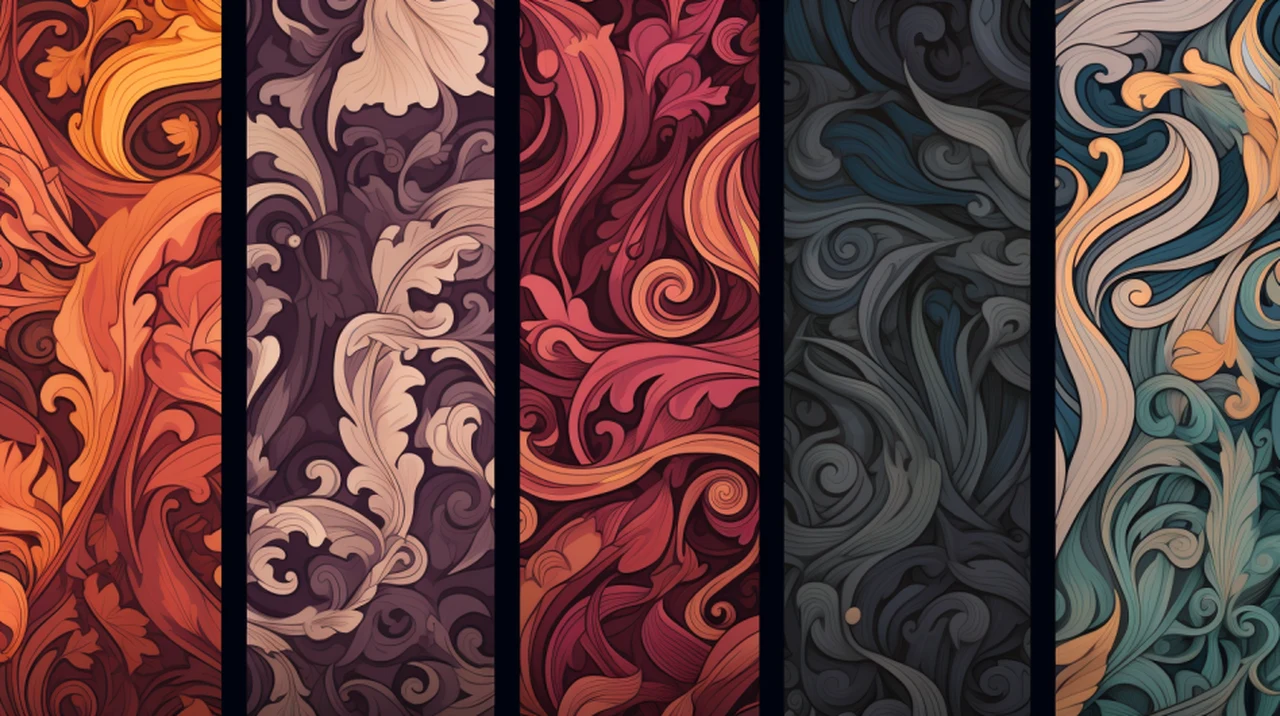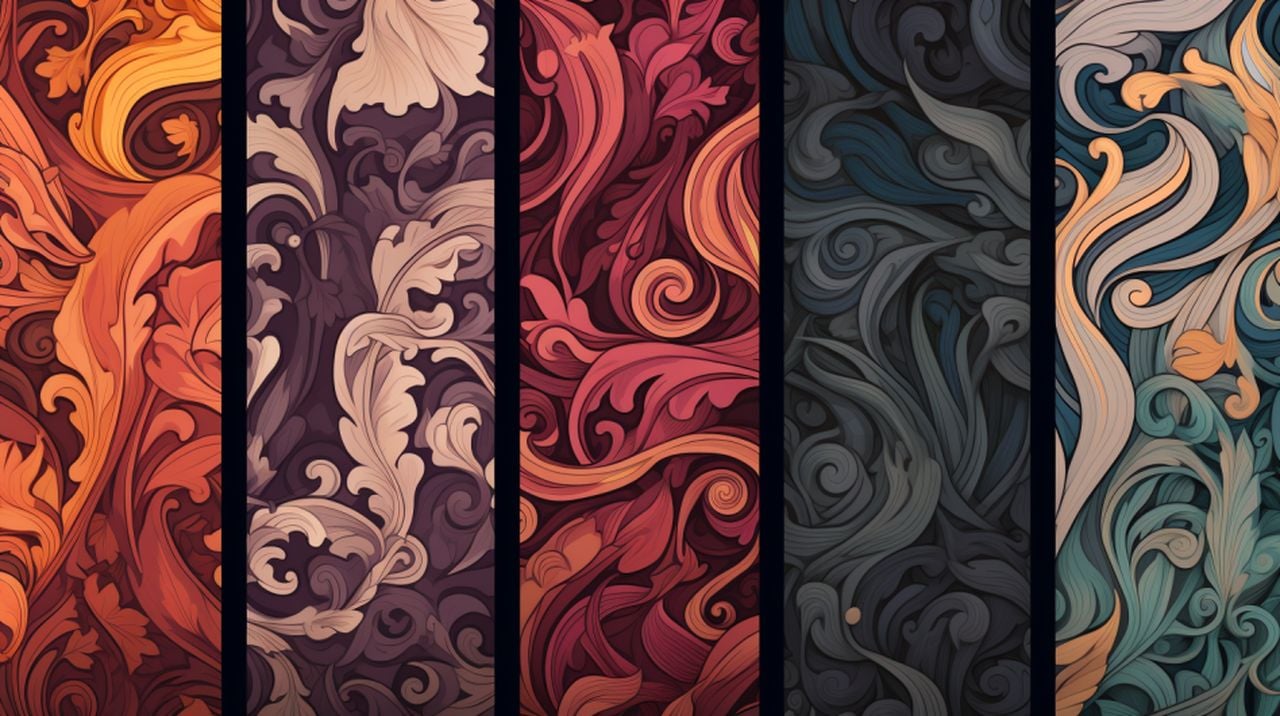
Over the past 12 months the world of digital art creation has exploded. One recent AI tool that has been making waves in this field is DallE 3 launched by OpenAI. But is it capable of creating seamless patterns like other AI art generator such as Stable Diffusion and Midjourney. This guide takes a deep dive into the world of DallE 3, exploring how it can be used to create seamless patterns that can be used on a variety of products with remarkable precision and finesse.
Experimentation on just how good DallE 3 was at create seamless patterns and to what accuracy was conducted using Redbubble, a popular platform for customizing products, to upload and evaluate the patterns on items such as graphic T-shirts, phone cases, and spiral notebooks. A tutorial created by the Autopilot Passive Income YouTube channel also provides more insight into how you can use these new AI features within DallE 3 to create patterns for your own uses or to sell online.
The journey begins with the generation of a myriad of seamless patterns using DallE 3. The AI tool was given specific prompts, such as the creation of a seamless floral pattern. To add depth and complexity to the design, a carefully chosen color palette was used, along with additional details like a hand-drawn illustration with a subtle grunge texture. These graphic design elements served to enrich the patterns, enhancing their visual appeal and making them more captivating.
Creating seamless patterns with DallE 3
Once the patterns were created, they were uploaded to Redbubble to evaluate their seamless integration on various products. The patterns were implemented on graphic T-shirts, phone cases, and spiral notebooks. The visibility of seams was then meticulously scrutinized on each product. The goal was to determine how well the patterns maintained their integrity and continuity when applied to different surfaces and shapes.
Seamless pattern prompts
Creating seamless patterns using DALL-E 3 involves crafting prompts that effectively communicate the desired elements, styles, and continuity of the pattern. Remember, DALL-E 3 might require a few attempts to perfectly capture your vision, so be patient and adjust your prompts based on the results you get. Here are some tips for formulating your prompts:
- Specify the Pattern Type: This involves defining the fundamental nature of the pattern. For instance, geometric patterns can range from simple shapes like squares and triangles to more complex tessellations. Floral patterns might include specific flowers or a mix of foliage and blossoms. Abstract patterns could be more free-form and less representational. By specifying the type, such as “intricate Celtic knot pattern” or “retro 70s swirls and circles”, you guide the AI towards your desired theme.
- Mention Color Palette: Colors can dramatically change the feel of a pattern. Pastel shades might convey a soft, gentle aesthetic, while bold, primary colors could give a more energetic vibe. Specifying colors like “earth tones including browns and greens” or “monochrome pattern in shades of blue” helps in achieving the desired mood and visual impact.
- Indicate Style or Era: This adds a historical or cultural dimension to your pattern. An Art Deco style may feature streamlined, geometric forms and rich colors, while a Victorian pattern might include intricate florals and ornate details. By stating something like “a pattern in the style of Japanese Edo period art” or “1960s psychedelic patterns”, you direct the AI towards specific artistic influences.
- Detail the Scale and Density: The size and spacing of elements in a pattern are crucial for its overall appearance. A dense pattern with small, closely packed elements creates a different effect than a sparse pattern with larger, more spaced-out elements. For example, “a densely packed miniature star pattern” or “a sparse pattern with large, abstract shapes” gives clear guidance on the desired scale and density.
- Request for Symmetry or Asymmetry: Symmetrical patterns are balanced and orderly, while asymmetrical patterns can appear more dynamic and spontaneous. By specifying your preference, such as “perfectly symmetrical geometric shapes” or “asymmetrical layout with varied plant forms”, you can influence the pattern’s balance and flow.
- Define Texture or Material: This aspect involves the perceived surface quality or material of the pattern. A pattern that mimics a specific material, like “a seamless pattern that looks like quilted fabric” or “metallic sheen in an industrial-themed pattern”, can add a tactile dimension to the visual design.
- Consider Repeating Elements: Emphasizing seamless transitions between elements is crucial for a continuous pattern. Phrases like “elements that interlock without visible seams” or “a pattern where shapes blend seamlessly at the edges” ensure the AI understands the need for a cohesive, uninterrupted design.
- Be Open to Experimentation: Exploring unconventional combinations or novel ideas can lead to unique and creative patterns. Inviting unpredictability with prompts like “a fusion of Art Nouveau and futuristic styles” or “an unexpected mix of organic and digital elements” can yield fascinating results.
Image upscaling
To ensure the high quality of the patterns, an image upscaler was employed. This tool amplifies the resolution of images, making them clearer and more detailed. The upscaler was particularly beneficial for patterns that included intricate details, such as the hand-drawn illustration and grunge texture. The high-resolution images resulted in patterns that were sharp and well-defined, regardless of the product they were applied to.
The use of color palettes and supplementary details played a significant role in personalizing the patterns. The color palette was carefully chosen to complement the design and enhance its visual appeal. Additional details, such as a hand-drawn illustration and a grunge texture, were also incorporated to add depth and complexity to the patterns. These elements contributed to the creation of unique and visually engaging designs that stood out on the products.
Seem visibility
The visibility of seams was a critical factor in evaluating the seamless integration of the patterns. The patterns were inspected on various products to determine the visibility of the seams. The aim was to ensure a seamless transition from one segment of the pattern to the next, regardless of the product’s shape or surface.
To achieve superior seamlessness, several strategies were employed. One such strategy involved adjusting the background color. By choosing a background color that harmonized with the pattern, the visibility of seams was significantly reduced. Another strategy involved the use of image sizing tools to ensure the patterns fit perfectly on the products. These modifications resulted in patterns that were approximately 95% seamless.
The experiment demonstrated that DallE 3 is highly proficient in creating patterns that are nearly seamless. The AI tool was successful in generating unique and visually engaging designs that maintained their integrity and continuity when implemented on various products. However, the seamlessness of the patterns was not perfect, and some adjustments were necessary to achieve superior results. Despite these minor challenges, DallE 3 proved its worth as a tool for creating seamless patterns, offering a fresh and innovative approach to graphic design and those looking to resell a designs perhaps on Etsy or other digital e-commerce sites.
Filed Under: Guides, Top News
Latest timeswonderful Deals
Disclosure: Some of our articles include affiliate links. If you buy something through one of these links, timeswonderful may earn an affiliate commission. Learn about our Disclosure Policy.

